#silphium
Text
99 notes
·
View notes
Photo
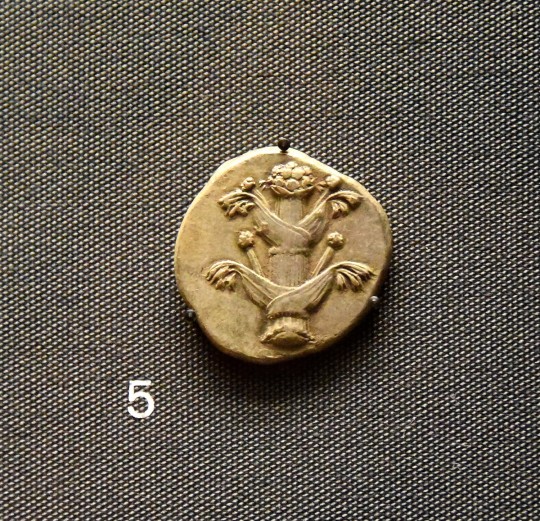
Silphium
Silphium (also known as laser) was an uncultivated plant that grew in Cyrene, North Africa (modern Shahhat, Libya) and became the cash crop of the region of Cyrenaica between c. 631 BCE and the 1st century CE when, according to Pliny the Elder, it had become extinct. Its disappearance is considered the first recorded species extinction in history.
Continue reading...
85 notes
·
View notes
Photo

A closer look reveals the delicate fronds of Ferula drudeana propagated at Istanbul’s Nezahat Gökyiğit Botanical Garden. The Ferula genus of flowering plants includes carrots, fennel, and parsley.
#ferula#ferula drudeana#silphion#silphium#apiales#plant#plants#extinct#extinct plant#extinct plants#leaf#leaves#tripinnate#garden#gardens#botanical garden#botanical gardens#nezahat gökyiğit#nezahat gökyiğit botanical garden#national geographic#nat geo#article#articles#istanbul#turkey#nature
25 notes
·
View notes
Note
thinkin' about IOL today because i saw an article claiming silphium has been rediscovered as Not Extinct After All. great news for our favorite bluestocking, i think. ^^ have a lovely day~
It's time for silphium to prove me canon or not canon re its contraceptive properties! I used it as my fantasy contraceptive to tie in with trigon, and look where we are.
History is a two-headed snake of a story, always coming back for us. I do hope the direwolves are next. I'm always going about telling people they were real.
49 notes
·
View notes
Text
A Turkish professor has announced that he has identified silphion, an ancient aphrodisiac and ‘cure-all’ plant thought to have gone extinct almost 2000 years ago.
#silphion#silphium#aphrodisiac#plant#medicine#Mediterranean#ancient#history#archaeology news#ancient origins
144 notes
·
View notes
Text
I feel the heart is the most aromantic organ. I know what your think but hear me out.
Most people associate the heart with love, and this is mainly because of the love heart shape (which is actually to do with love) has the same name as the organ.
But the shape actually originally comes from the Silphium's seedpod plant which was seen as a herb of love and sex, it was also used as an early form of birth control. The plant was the put on ancient Cyrene money.
Anyway, in reality in the brain controls love. The feeling of love is controlled by three hormones, oxytocin, dopamine, and serotonin. The brain controls the secretion of all hormones, and the glands of all three of these hormones are in the brain (except dopamine which can come from the the hypothalamus, in the brain, and the adrenal glands, above kidneys).
In reality the only effect love has on the heart is that it can speed up your pulse (how fast the heart bets), but that is true for way to many other things for it to be considered a connection, non one every relates being scared, angry or stressed to the heart (unless for medical reasons as lots stress can cause the blood vessel to narrow).
But despite the heart (organ) having nothing to do with love, romance or sex, it is seen as such and those things are forced on it. As an aromantic person I think that’s quite relatable.
#is it weird that I’m calling organs relatable?#the heart is an aromantic#aromantic#biology#the heart#heart#aro#aroace#science#hormones#the brain#ancient greece#silphium#relatable#lgbt#blood#oxytocin#dopamine#serotonin#love#love is caused by hormones#love has nothing to do with the heart#heart ≠ love#idc what people say
6 notes
·
View notes
Photo
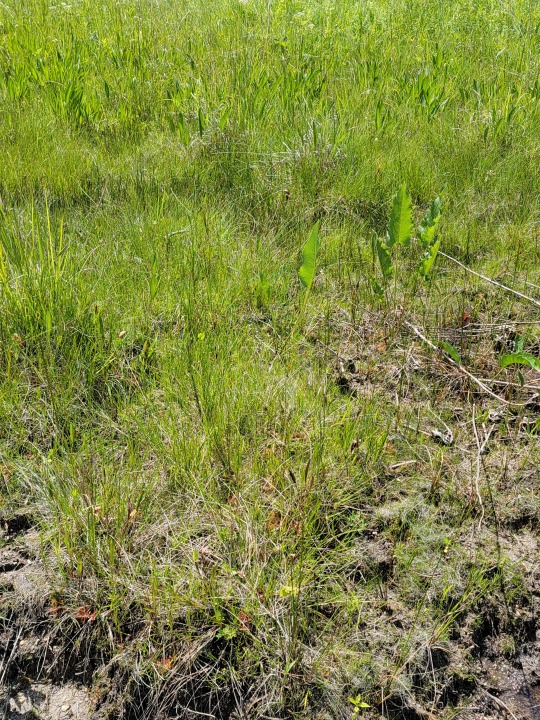
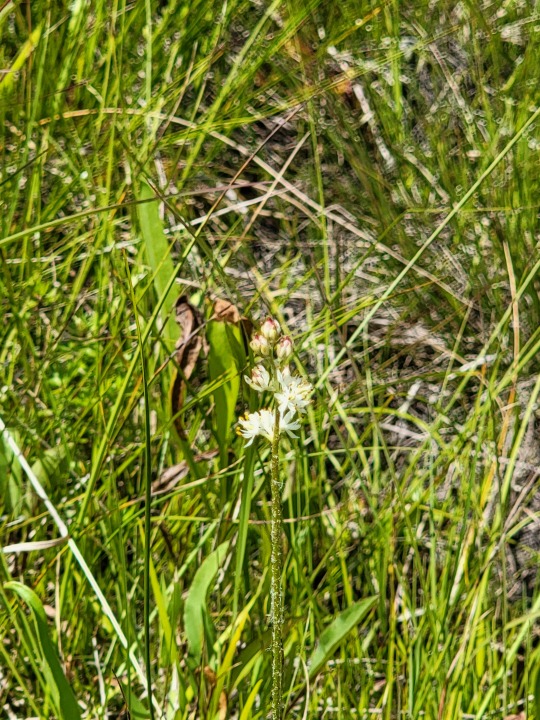




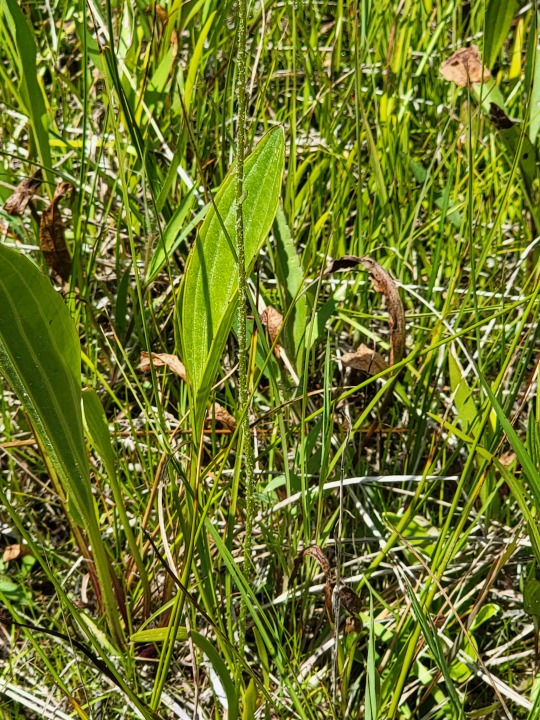
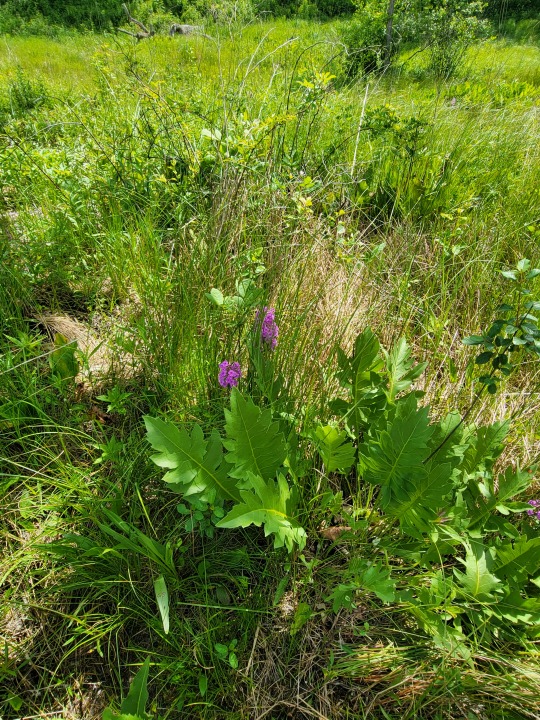


Denizens of the Marl,
My main focus was to introduce an early blooming species that I don’t know if I talked about ever. I usually miss my window to see this plant and for some reason I’ve never gotten close enough to photograph it properly, you can kinda see a gleam of light on the glandular hairs but not well enough to show structure.
Triantha glutinosa, blooms in early June in Ohio but can last till late June and in other states occurs in bogs in warm water conditions and blooms much later which is strange to me. I think this must be an adaptive phenotypical thing but you would expect it to be opposite and light blooming also seems to not be the culprit so I don’t know. False Asphodel is another common name but I honestly prefer calling it sticky or glutinous false ashpodel. As a plant living in these nutrient poor super leached marl flats this plant is a carnivor, protease excretor glandular hair trap specifically, but strangely only on it’s flowering stem and not on it’s minute basal rosette. Opposite of most species that are carnivores most species try to keep traps as far from the flowers as possible which makes sense evolutionary. Glandular traps near an inflorescence seems strange for successful pollination. As it turns out this may be a seldomly pollinated species where most individuals in populations are ancient clones that have formed from rhizome spread overtime in these glacial refugium. The other thing that seems notable is many people studying these false ashpodels (Triantha spp.) run into the same morphology and phenology problems that I have, and have even come to contempt and discourse over specific populations and are evaluating them as part of a biological species complex. I agree on the T. occidentalis western split on all accounts but some of the minor disjunct probable splits seem more complex overall (Central Appalachian mountain populations (TN, VA, SC, GA)
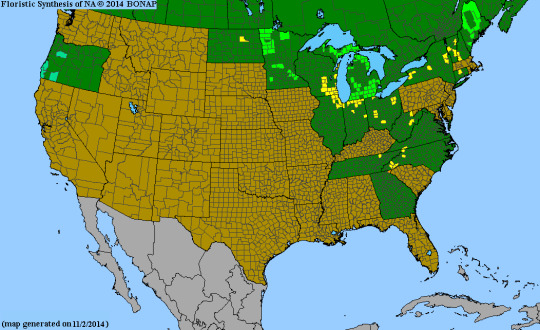
I feel like I can’t stress the importance of this limestone marl and the unique opportunity of getting this close to these plants without any special camera. Though I do wish I had one to display the features properly. Most of the time if you are traversing a fen you have to find and identify petrified marl shelfs or surface travertines, or you are walking on old and ancient tussock clumps from what is usually Carex stricta. Im walking on a displaced gravel shelf with petrified marl and wouldn’t dare to walk off of it and disturb the easily motile banks of loose marl or the suspended marl sediment floating like quick sand. The plants here are fragile and the habitat is equally fragile with many state listed species that cant take damage. Everywhere in the high exposure areas of marl flats are these Drosera rotundifolia and the smooth rounded/heartshaped leaves of grass of parnassas, which is in bloom as I type. Parnassia glauca is so beautiful with it’s unique floral venation and Ill post more pics once again when I get to it. The farther you get from the flats the less exposure and with it comes the sedge meadow with Arnoglossum plantagineum, also known as fen plantain leaved indian plantain. The last few shots are associated with the fully scabrid moderate sized var. ,not species, Silphium terebinthinaceum var. pinnatifidum, which we only see in fens in Ohio and the Ice scoured dwarf willow, Salix myricoides, in all of it’s new leaf glory. Still not looking blue with white pubescent undersides just yet.
Personal note:
Its been really weird doing this lagged posting because these are not matched to the time I was there. Right now, I feel like I should be posting about white bottle gentian, prairie gentian ,fringed gentian or ,andrews bottle gentian and here I am mid June posts. Heck it’s also Spiranthes spp. season and paw paw shaking season rn, most people are smelling sulfur shelves and foraging chicken of the woods(same thing). Trying to catch up and doing documentation and having a place to post personal thoughts on this stuff.
#fens#meadowcore#silphium#salix#salix myricoides#arnoglossum#arnoglossum plantagineum#species complex#carnivourousplant#carnivory#botany#ecology#wildflowers#ohio news#ohio#kawaii#plantblr#botanical#botany on tumblr#plants on tumblr#plants#drosera#drosera rotundifolia#geology#cottagecore#parnassia#parnassia glauca#triantha glutinosa#triantha
24 notes
·
View notes
Text
For anyone who may be misinformed about the rediscovery of silphium:
Yes, we may have rediscovered silphium, the roman 'miracle herb' that could supposedly be used to treat dozens of ailments and was a staple of roman cooking
We don’t know whether or not it’s silphium because we still don’t know what silphium is
We have no way of confirming it’s silphium. To confirm this, we would need to discover preserved samples of the plant, which is possible but not likely
It may not be silphium. BUT! There is a huge amount of overlap between this plant (ferula drudeana) and what we know of silphium, a FAR greater overlap than any other plant species we know of. If this isn’t silphium, it could well be the closest plant we will ever find to it
You cannot buy seeds of it
You absolutely SHOULD NOT buy silphium in any form for hobby growing or use (culinary or otherwise).
This plant is critically endangered. It does not grow well outside of very specific areas and there is likely not enough species to get any real commercial trade started any time soon. I doubt you will be able to ethically buy silphium in the next 10 years.
No, silphium was NOT overharvested to extinction because it was an effective contraceptive/abortifacient.
While it had many medicinal uses, it was likely primarily consumed as a culinary herb. Part of its overharvesting may also have been due to nearby sheep grazing on its leaves, as silphium-fed sheep commanded a higher price on the market.
In fact, Silphium may not have even died out due to over-harvesting at all; it may have been climate change or genetics that did it in.
Silphium is probably not a miracle cure today and its reputation may be overstated even for the time period, but it could still prove useful as a natural remedy and we could find compounds in its roots and learn interesting things that would be useful to modern medicine.
Anything else you want to know about silphium? Ask me!
#silphium#ancient rome#tumblr is literally THE reason people keep saying it was a 'contraceptive so effective it was consumed to extinction'#which has truths in it but is a blatant fabrication
19 notes
·
View notes
Text
Ancient 'miracle plant,' believed extinct, said rediscovered in Turkey | The Times of Israel
8 notes
·
View notes
Link
Silphium REAL!!!!!!!!!
8 notes
·
View notes
Photo

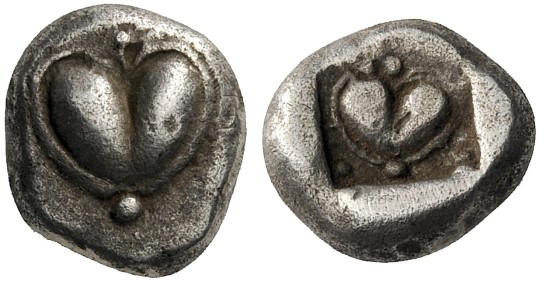
An illustration depicting silphium’s (also known as silphion) heart-shaped seed pods.
https://allthatsinteresting.com/silphium
♥ The Ancient Origin of the Heart-Shaped Valentine ♥
This very rare coin is a silver hemidrachm struck in Cyrene (modern Libya) around 500 to 480 BC. Both sides of the coin show the now extinct* heart-shaped silphium fruit. The silphium plant, a large relative of the fennel plant, was abundant and a lucrative cash crop in ancient Cyrene, which is why it appears as the symbol of the city on its coinage.
Since it allegedly went extinct, silphium is a bit mysterious to us. We do know that it was greatly prized for its medicinal and culinary properties. It was used as an herbal birth control method, thus forever associating the shape of its fruit with passionate love and thus, matters of the heart. Ancient writings also help tie silphium to sexuality and love. One such reference appears in Pausanias’ Description of Greece in a story of the Dioscuri staying at a house belonging to Phormion, a Spartan: “For it so happened that his maiden daughter was living in it. By the next day this maiden and all her girlish apparel had disappeared, and in the room were found images of the Dioscuri, a table, and silphium upon it.”
Pliny reported in his Natural History that the last known stalk of silphium found in Cyrene was given to the Emperor Nero “as a curiosity,” because it was nearly extinct by then.
*There is some debate about whether or not this plant is really extinct. You can read about that on the Silphium Wikipedia page.
https://archaicwonder.tumblr.com/post/110934369471/the-ancient-origin-of-the-heart-shaped-valentine
2 notes
·
View notes
Photo
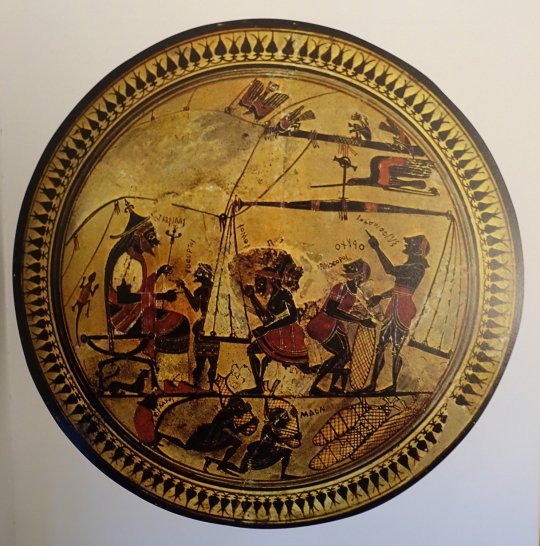
Theophrastus and Pliny the Elder on Silphium
The silphium plant of Cyrene, valued as a seasoning, aromatic, and for its medicinal properties, is referenced by several notable ancient writers, but two of the best-known descriptions come from Theophrastus (l. c. 371 to c. 287 BCE) and Pliny the Elder (l. 23-79 CE). By Pliny's time, silphium was extinct, most likely due to overharvesting and overgrazing.
Continue reading...
30 notes
·
View notes
Photo

Noted food historian Sally Grainger prepares an ancient Roman dish using Ferula drudeana during an experiment at Istanbul’s Nezahat Gökyiğit Botanical Garden. “Silphion is a fascinating plant, and I can understand why the Romans craved it,” she says.
#flower#flowers#flowering#ferula#ferula drudeana#silphion#silphium#apiales#tripinnate#plant#plants#sally grainger#food historian#food historians#experiment#ancient#experiments#ancient food#ancient dish#ancient dishes#roman#roman food#roman dish#roman dishes#ancient roman food#ancient roman dish#ancient roman dishes#istanbul#turkey#article
50 notes
·
View notes
Text
none of the articles I’ve seen on Silphion/Silphium has mentioned its use as an abortifacent, which is probably wise from a conservation standpoint, but also sad because it played a huge part in the ancient’s lives and family planning.
5 notes
·
View notes
Text
This lovely large composite is Silphium terebinthinaceum, an aster in the tribe Heliantheae and a close relative of sunflowers. 🌻 This midwestern species occurs in dry, rocky-sandy areas, prairies, and occasionally in open mountainous meadows. The leaves are enormous and very hairy!
A key ID characteristic of this genus is that the disc florets are sterile and only the rays produce viable seed. With most other Heliantheae members, the opposite is true!
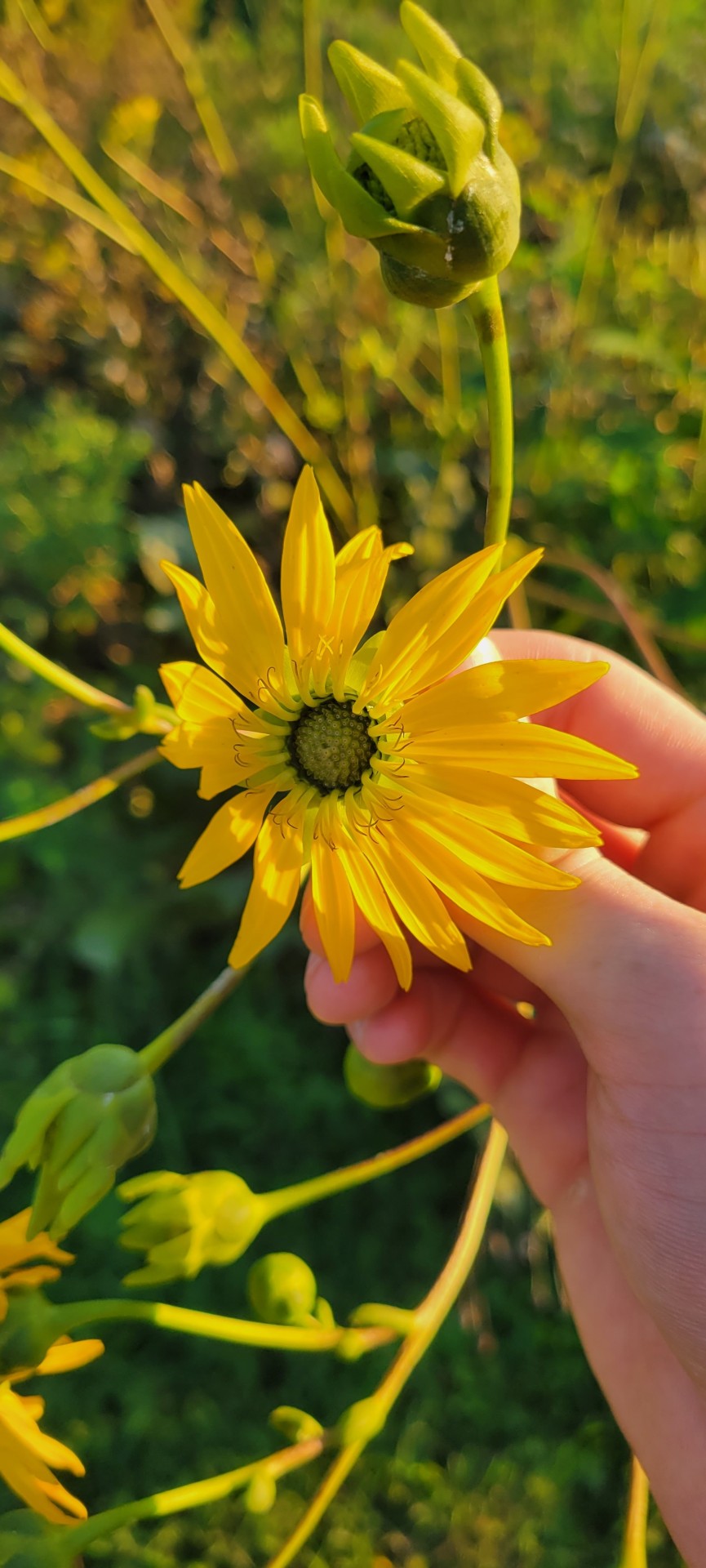
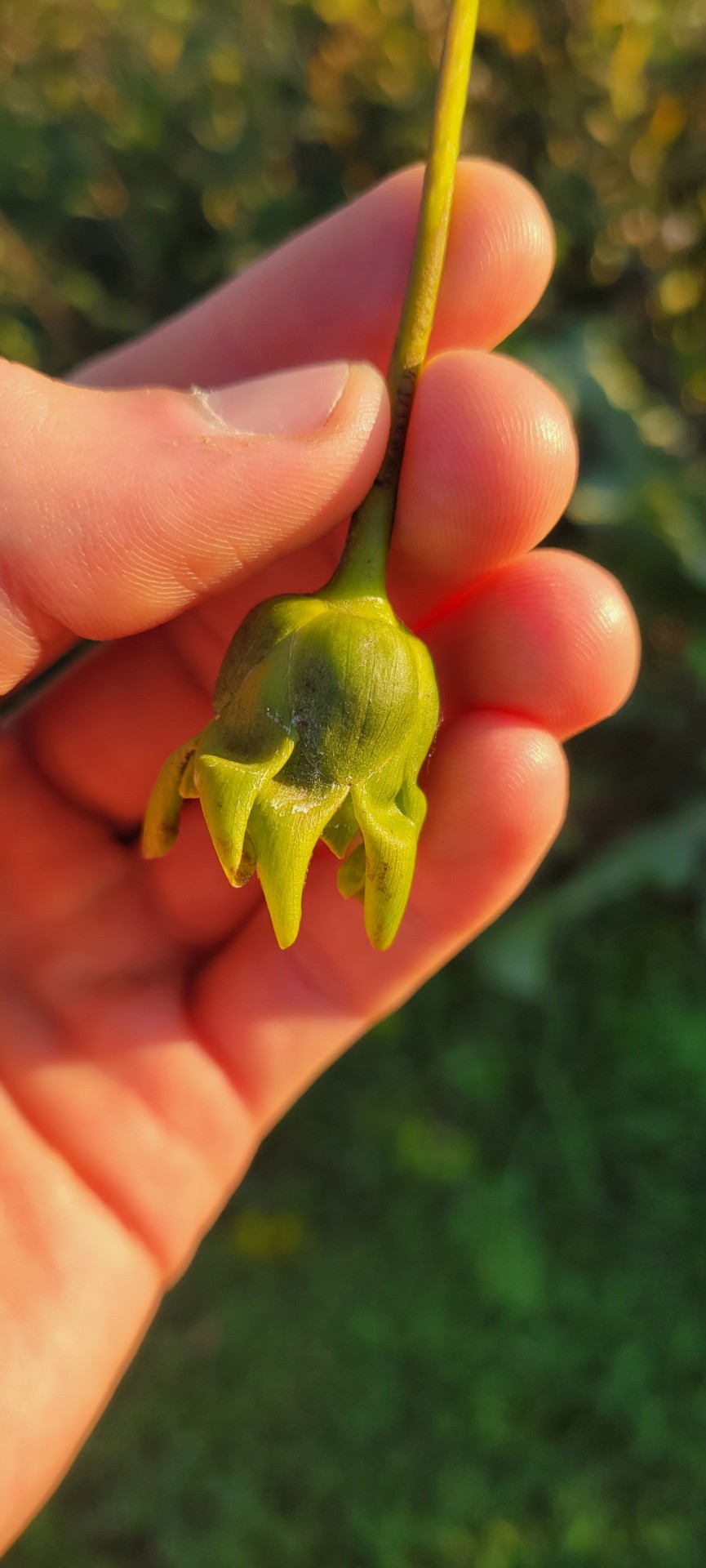


Silphium terebinthinaceum seen planted in a riparian area in in Lexington, Kentucky.
#plantblr#botany#asteraceae#aster#silphium#kentucky#kentucky plants#house plant#plants#foraging#floral#flores
2 notes
·
View notes